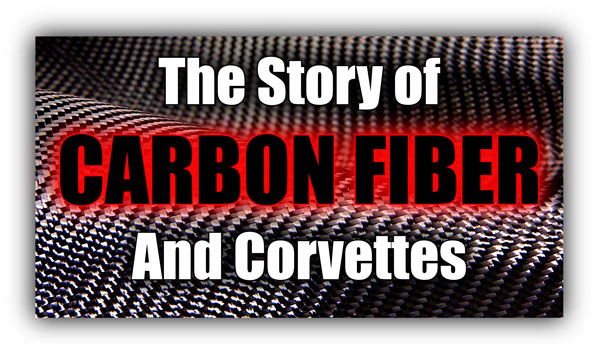The Hottest Automotive Material Since Fiberglass
Dateline: 8.22.20 This article first appeared in the May 2019 issue of Vette Vues – UPDATE: Indulge me for two brief paragraphs on the subject of carbon fiber and Corvettes. First, two “known” secrets; 1. There will be a Z06 and a ZR1 version of the C8 Corvette. 2. GM is committed to electric cars, by 2023 they project over 20 all-electric vehicles and by 2030 almost all GM vehicles will be all-electric-powered. We don’t know how the electrical grid will be able to handle the extra load for electricity, lets hope there are some new technology tricks up engineer’s sleeves. The new C8 uses a 48-volt system; that’s a big jump from the previous 12-volt system that has been around since the 1950s.
Why the extra juice? Allow me to speculate.
The C8 ZR1 will have an all-electric, all-wheel-drive drivetrain with a combined electric motor power of 1,000-horsepower and 1,000-lb/ft of torque. Electric motors have their full torque starting at 1-rpm; that’s why diesel-electric locomotives are so powerful. Here’s the carbon fiber leap. Remember how we were stunned when the 2006 Z06 was debuted and we learned that the frame was aluminum. Next, all C7 and C8 Corvette have aluminum frames. To safely handle the tremendous leap on power, I predict that the C8 ZR1 will have a carbon fiber chassis. Think about it. We’ll see. Stepping off soapbox…
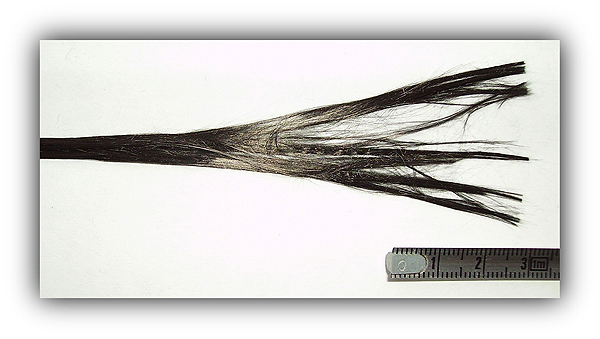
Carbon Fiber is without a doubt the hottest trend in automotive materials since the introduction of fiberglass in the early 1950s. Most car enthusiasts understand that racing technology typically precedes production technology. The first structural application of carbon fiber arrived in 1981 when McLaren built their MP4/1 Formula One racecar. McLaren engineer John Barnard built the car’s monocoque chassis/tub completely out of carbon fiber supplied by Hercules Aerospace, in Wilmington, Delaware.
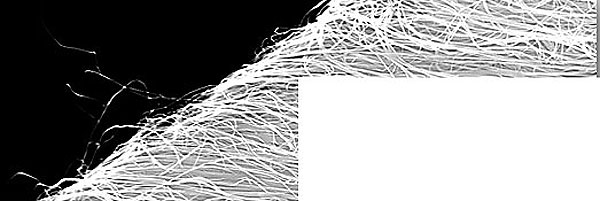
This was a radical departure from traditional monocoque-type construction that consists of a central “tub” structure that the front frame and suspension, engine, and drivetrain all bolts onto. Formula One competitors were suspicion of the new material and called it, “black plastic” fearing that it would shatter and vaporize in a crash situation. This misperception was dispelled at the 1981 Monza Grand Prix when driver John Watson became carbon fiber’s first “crash test dummy”. Watson’s car spin out and crashed was so violet that people that saw the crash on television cried, thinking the worst. But Watson climbed out of what was once a fine racecar and waved to the crown, unhurt.
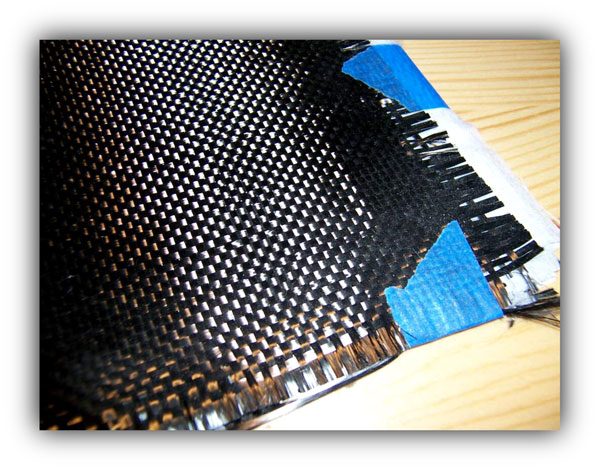
Watson said in an interview, “Had I had that accident in a conventional aluminum tub, I suspect I might have been injured because the strength of an aluminum tub is very much less than the carbon tub.” McLaren’s objective with the use of carbon fiber was to reduce weight and increase strength. Watson’s accident proved the point and almost overnight, Formula One car builders switched to carbon fiber tubs.

In 1879 Thomas Edison is credited with inventing carbon fiber in his quest to develop the electric light bulb. Edison formed threads of cotton and bamboo slivers into a specific shape and baked them at high temperatures. Cellulose in cotton and bamboo is a natural polymer, consisting of repeating segments of glucose. The baking process “carbonizes” the material and becomes a carbon copy of the beginning material – a carbon fiber with an exact shape. U.S. Navy ships used the same filaments into the 1960s because they were stronger and more resistant to vibration than tungsten.
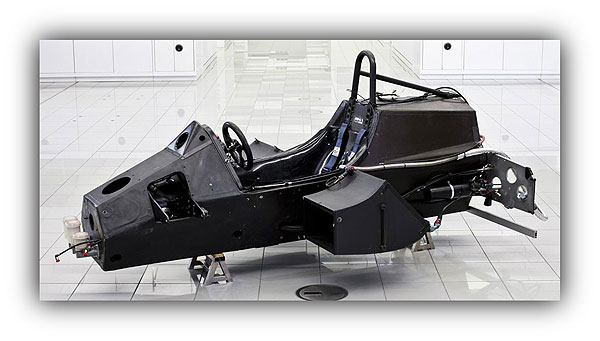
Modern carbon fiber was born in 1956 in a Union Carbide lab by physicist Roger Bacon when he was performing experiments with the triple point of graphite. This is where the solid, liquid, and gas are all in thermal equilibrium. Using a device similar to early carbon arc street lamps, Bacon observed that when he decreased the pressure in his device, the carbon would go from the vapor to solid, forming a one-inch long stalagmite-like structure on the lower electrode that he called “whiskers”. These whiskers were 1/10th diameter of a human hair that you could bend and kink, but they weren’t brittle. He called these long filaments the “perfect graphite.”
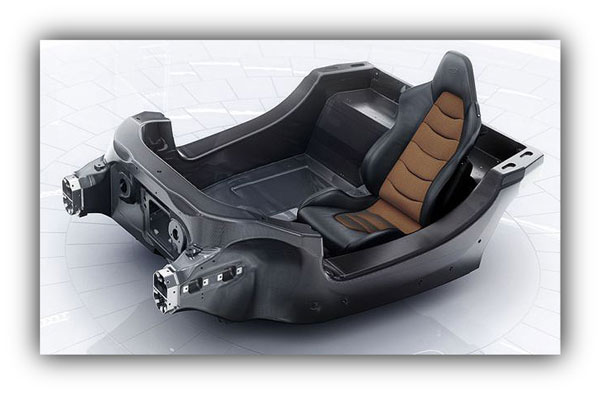
Further experimentation developed the stiffest, strongest materials by weight that had ever been created. Steel has a tensile strength of 1-2 Gigapascals (GPa); Bacon’s fibers had a tensile strength of 20 GPa. Later development brought the carbon fiber’s strength up to 200 GPa. Bacon’s work eventually developed carbon nanotubes (CNTs); hollow cylinders of graphite with diameters on the order of single molecules. Today, CNTs are used in energy storage, device modeling, boat hulls, water filters, sporting goods, thin-film electronics, antennas, coatings, actuators, electromagnetic shields, and yes, automotive parts. Auto applications include; energy storage applications, batteries and superconductors; printable, thermoformable, capacitive touch sensors used to replace membrane switches in interiors; and polymer composites with mechanical properties, thermal conductivity, and enhanced electrical connectivity.
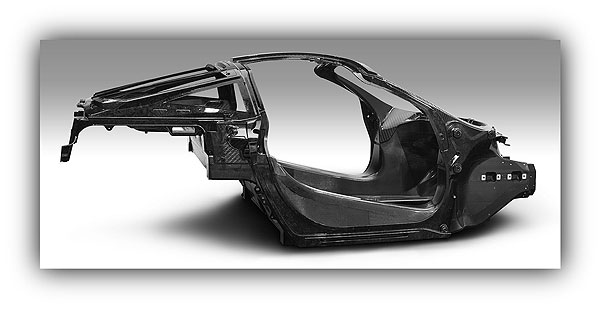
For performance fans, the use of CNT polymers means second-generation carbon fiber material. Consider the leap from C5 to the C5 Z06 with it’s bolted and bonded hardtop roof that increased structures stiffness by 12-percent, compared to the C6 Z06 with its aluminum frame that was 50-percent stronger in bending resistance; compared the C7’s aluminum frame that is 60-percent stiller than the C6’s steel frame. What levels of structural stiffness might we see with a carbon fiber frame, or better yet a carbon nanotube fiber frame?
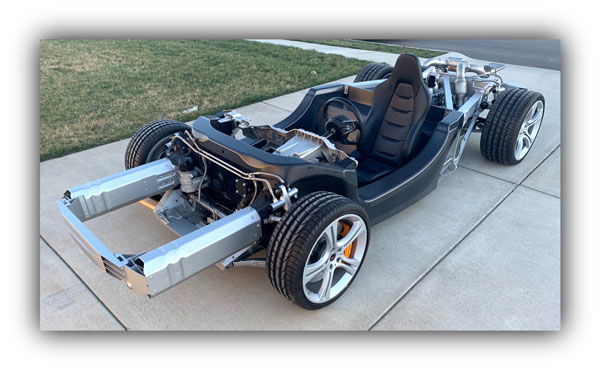
Carbon fiber has two major downsides; 1. cost; and 2. recycling. Elon Musk’s SpaceX company is working on bringing down the cost of carbon fiber because large carbon fiber parts are an essential element in reducing the cost of space exploration. Sir Richard Branson’s Virgin Galactic space planes are made from carbon fiber. Carbon fiber is definitely “space-age” material. Another factor in why the cost of carbon fiber is so high is simple supply and demand. Nearly half of the airframe of the Boeing 787 is made from carbon fiber and offers a weight savings of 20-percent. The 787’s airframe is made of 20-percent aluminum, 15-percent titanium, and 5-percent other. Composite structures require less scheduled maintenance than non-composite structures.

The second big downside of carbon fiber is that it is difficult to recycle. Used material can be ground down, or exposed to very high temperatures and, or chemicals to recover the carbon fiber. Remember, the carbon fiber is embedded in resin. Unfortunately, the carbon fiber can be damaged and the matrix resin materials in the composites can be destroyed. Damaged carbon fibers can never be used again in carbon fiber applications.

In 2017 researchers from Washington State University developed a new recycling method using mild acids as catalysts in low-temperature ethanol to break down thermosets. To break down the cured material, researchers raised the material temperature to allow the catalyst-containing liquid to penetrate the composite and break down the complete structure; basically dissolving the material. This allowed the researchers to recover the carbon fibers and the resin material. The researchers have filed for a patent and are developing a commercial process to take to the marketplace.

So, there have been numerous reasons why it has taken so long for carbon fiber parts to integrate into Corvettes. The 1992 Stingray III concept car had a carbon-fiber tub as the central part of the car’s chassis. In 2004 the swansong Corvette special edition option was the Commemorative Edition. This was a beautiful option group with special trim, stripes, and dedicated paint that cost $3,700 for the coupe and convertible. The option was available on the Z06, but with one big difference; the Z06 version had a carbon fiber hood that weighed only 20.5-pounds, compared to 31.1-pounds for the stock hood; a savings of 10.6-pounds. The Z06 Commemorative Edition cost $635 and the carbon fiber hood was only available on the Z06 Commemorative Edition option.

When the 2006 Z06 came out, everyone was agog over the new LS7 427 engine with its dry-sump oil system; widebody; new wheels and suspension; aluminum frame; and magnesium engine cradle and roof section. It was easy to miss the carbon fiber body panels staring you in the face. The Z06’s front fenders, front wheelhouses, and rear fenders were carbon fiber and the interior floor was a carbon fiber and balsa wood sandwich. The carbon fiber components certainly added to the $65,800 price of the 2006 Z06 – $21,200 more than the base model coupe.

The 2009 LS9-powered, supercharged ZR1 was the Corvette no one was anticipating that caught everyone by surprise. From 2009 to 2015 the C6 ZR1 was the most powerful Corvette ever offered. But the ZR1 wasn’t just about power. The new ZR1 had more carbon fiber than any previous Corvette ever had. The ZR1 featured a carbon fiber raised hood with a clear polycarbonate window that showed off the LS9’s intercooler; the dedicated front fenders were painted carbon fiber; and the front fascia splitter; roof bow; fixed roof panel; and the side rockers were clear-coated carbon fiber.

From 2010 to 2013 Chevrolet played mix’n-match with parts, making specialty parts from the ZR1 and Z06 available on the very popular Grand Sport; making buying a new Corvette a boutique experience. In 2011 Chevrolet introduced the $90,960 Carbon Edition Z06. RPO CFZ Carbon Fiber Package for the Z06 was a $3,995 option that added black carbon fiber splitter, side rockers, roof panel, and a body-colored ZR1 rear spoiler.

Carbon fiber integration continued with the C7, but mostly as options. RPO C2M, the $2,995 Carbon Fiber Dual Roof Package, and the $1,995 RPO C2Z Visible Carbon Fiber Roof were available on all coupes from 2014 to 2019. From 2015 to 2019 RPO CFV, the $3,995 Carbon Fiber Ground Effects was available. And from 2014 to 2019 RPO FAY, the $995 Carbon Fiber Interior Appearance Package dressed up the C7’s interior.

The 2015 Z06 blew everyone away with a 145-horsepower raise from the C6 Z06. Carbon fiber parts included the dedicated raised hood and the removable carbon-fiber roof panel. Previous Z06 Corvettes had a fixed roof panel for additional rigidity. And all optional carbon fiber ground effects were available painted and unpainted.

In 2018 Chevrolet celebrated Corvette’s 65th Anniversary with the Carbon 65 Edition. Only 650 cars were offered on the Grand Sport 3LT and Z06 LZ models. The $15,000 package was dripping with special features. New to the lineup of carbon fiber features was the new rear spoiler and quarter ducts. Carbon fiber ground effects and the hood was also included in the package. And lastly, the $122,095 2019 ZR1 has a carbon-fiber halo hood and engine cover; adjustable high rear wing; front splitter and end caps; and steering wheel rim.
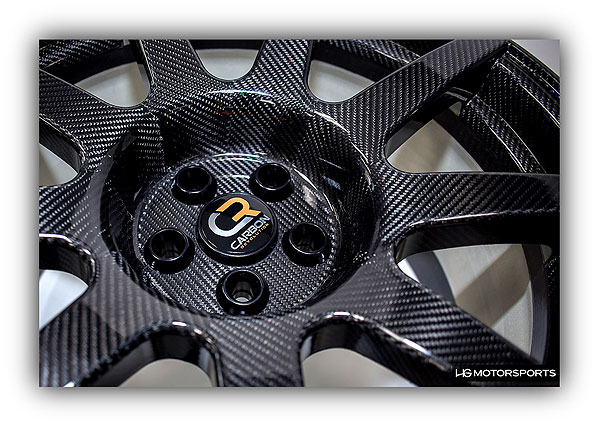
Carbon fiber will only become more ubiquitous in the future. What might we expect to see soon? The C8 structure may well use some form of a carbon-fiber tub, or perhaps carbon fiber side rails and other frame and chassis components. Carbon fiber wheels and perhaps some suspension parts might also be in Corvette’s future. Check out the cars in the Daytona Prototype International class at any IMSA race this year, that’s where you’ll find the clues as to what to expect.

Yes, the mat weave of carbon fiber is a look that has taken over the modern automotive and motorcycle hobby. Today you can get nearly anything either made with carbon fiber or with the carbon fiber look. As the price of carbon fiber comes down it will probably become the preferred material for performance cars. Several companies are today making and offering carbon fiber wheels. Carbon fiber 3D printers are also on the marketplace, as well as carbon fiber vinyl wrap material. Indeed, carbon fiber has become the “look” of our time. – Scott

This story was originally published in the May 2019 issue of Vette Vues.
A one-year subscription is only $25.95!

